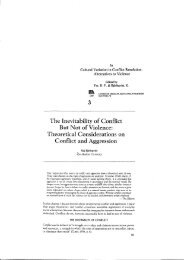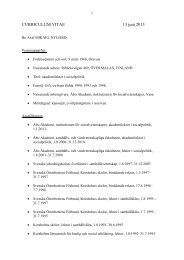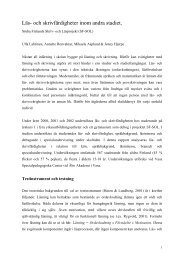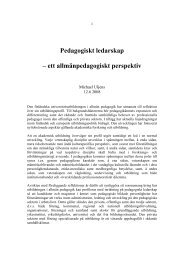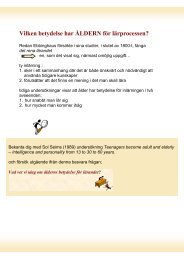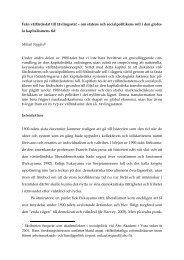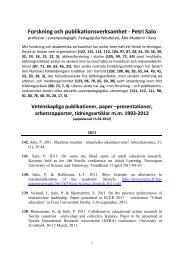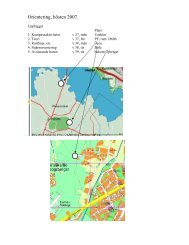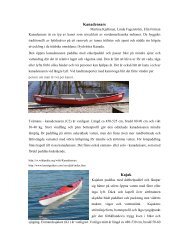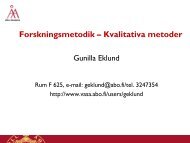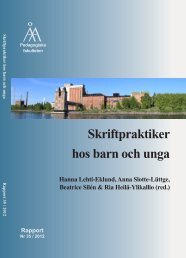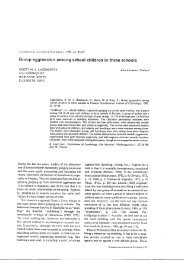Parties, Candidates and Citizens On-Line - Åbo Akademi
Parties, Candidates and Citizens On-Line - Åbo Akademi
Parties, Candidates and Citizens On-Line - Åbo Akademi
Create successful ePaper yourself
Turn your PDF publications into a flip-book with our unique Google optimized e-Paper software.
identified two groups of parties on the basis of their answers to the party questionnaire.<br />
<strong>On</strong>e cluster scored significantly higher on how important they ranked the website<br />
compared to other communication channels, <strong>and</strong> how highly they rated informative- <strong>and</strong><br />
engaging communication via their websites. These two clusters were hard to explain, or<br />
differentiate from each other, in light of the theoretical backdrop. Thus, the Finnish<br />
parties’ view of their website use is seemingly not influenced by any specific party trait.<br />
The Finnish parties appear to have an impromptu approach to their websites.<br />
Consequently, in determining how political parties look upon their own use of party<br />
websites, the character of the parties is seemingly not generally decisive (cf. Gibson et al.<br />
2003b, 86-90; Löfgren 2001, 23-30; Römmele 2003). Obviously, Römmele’s view (2003,<br />
8) that the parties themselves play a large role in determining what role party websites<br />
have for them is still valid. In fact, some findings in this study concerning individual<br />
parties even followed the paths described by Römmele (2003, 14). Nonetheless, the<br />
findings here have highlighted the problems of testing the ‘actor-constructivist’ view <strong>and</strong><br />
the difficulty of linking specific party traits to the parties’ ‘inside view’ regarding their<br />
websites.<br />
Concerning the second explorative research question – are there any patterns in<br />
the contents of the parties’ websites which are traceable to the parties’ character in terms<br />
of party goals, organization, size or composition of primary supporters? – the findings in<br />
this article were rather clear. The automatic clustering algorithm found two clusters based<br />
on the scores on the party website content indexes. The party websites belonging to the<br />
first of these clusters scored significantly higher than the sites in the second cluster on all<br />
four measured indexes; internal administration <strong>and</strong> information, campaigning <strong>and</strong> general<br />
information, participation <strong>and</strong> bottom-up communication <strong>and</strong> website presentation <strong>and</strong><br />
sophistication. Apart from one exception, a dividing line between the two clusters was<br />
found due to party size <strong>and</strong> resources. All websites in the first cluster belonged to the<br />
parties with representation in the Finnish parliament (major <strong>and</strong> minor), while all parties<br />
in the second clusters were fringe parties outside of parliament. Consequently, since<br />
Finnish parties, to a large extent, rely on direct state funding based on the share of seats in<br />
parliament (Djupsund 1990, 20; Nousiainen 1998, 72-73; Sundberg 1996, 150-151), both<br />
the size <strong>and</strong> associated resources seem to have an influence in determining the content of<br />
the Finnish parties’ websites (cf. Margolis et al. 2003, 57-58). Certain findings concerning<br />
individual parties in this study do support the anticipated role of party goals in<br />
determining their style of communication on their website (cf. Römmele 2003, 14). This<br />
influence was, however, overshadowed by the influence of party size. Nevertheless, this<br />
finding does indicate that the parties themselves play an important part in determining the<br />
contents of their websites, but this influence appears to be due to having sufficient<br />
resources available for the construction of the website rather than due to specific party<br />
104



